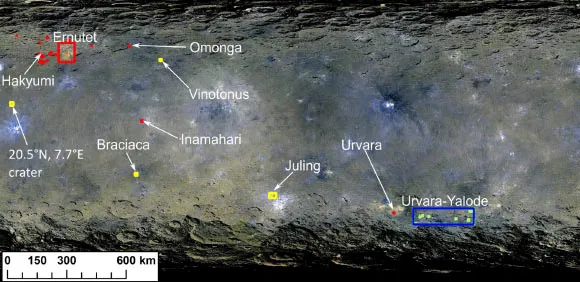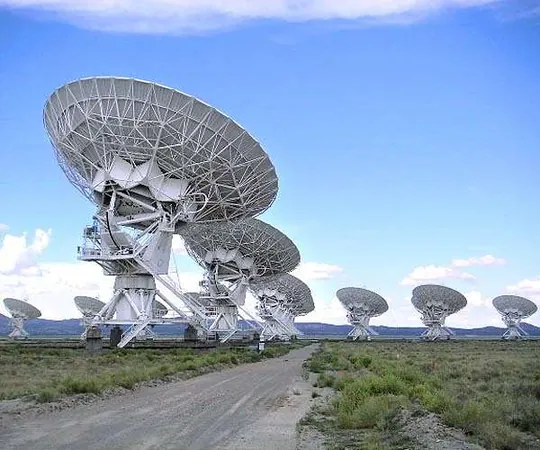
Groundbreaking Study Reveals Ceres' Secrets: Organic Matter Delivered by Asteroid Impactors!
2025-01-28
Author: Nur
In a stunning revelation, researchers have unveiled that Ceres, the largest object in the main asteroid belt and a fascinating potential ocean world in our Solar System, owes its organic material not to internal processes but to external asteroid impacts. This groundbreaking study, led by Dr. Ranjan Sarkar and his colleagues at the Max Planck Institute for Solar System Research, sheds light on the formation and evolution of celestial bodies—and hints at the rich history embedded within Ceres.
Ceres has long been recognized for its unique position within the asteroid belt, where conditions appear to favor the long-term preservation of water ice beneath its surface. While its carbonaceous chondritic composition has been documented previously, NASA's Dawn mission has provided high-resolution data that allows scientists to finally analyze the evolutionary steps and unique surface materials of this dwarf planet in greater detail.
Among the most thrilling findings are the organic-rich locations identified on Ceres—three significant craters: Ernutet, Inamahari, and Urvara. Researchers set out to gain a more comprehensive understanding of these sites and employed advanced deep neural networking techniques to scan the dwarf planet's surface. The results exposed the existence of two new organic-rich areas, although most of the known sites revealed that the organic material is mostly confined to the uppermost layers of the soil.
Dr. Sarkar highlighted the rarity of organic deposits on Ceres, stating that they do not display signs of cryovolcanic activity—a process often considered responsible for transporting organic matter from the interior to the surface. Instead, the study discovered that geological features typical of such processes, including volcanic domes and canyons, were absent. According to Dr. Martin Hoffmann, this lack of geological features that suggest tectonic or impact activity indicated that the organic compounds on Ceres have an exogenic origin—delivered by asteroids crashing into its surface.
The implications of these findings are enormous! They not only revolutionize our understanding of organics in space but also provoke questions about the potential for life in the universe. As researchers continue to analyze Ceres, they anticipate that more surprises may yet lie hidden beneath its icy crust.
This fascinating study has been published in the prestigious journal AGU Advances, igniting excitement within the scientific community and beyond. The quest to unlock the mysteries of Ceres continues, and the insights gained could reshape our knowledge of planetary formation and the origins of life itself.
Stay tuned as we follow the discoveries of this dwarf planet—and dare to imagine the secrets it may still hide!



 Brasil (PT)
Brasil (PT)
 Canada (EN)
Canada (EN)
 Chile (ES)
Chile (ES)
 Česko (CS)
Česko (CS)
 대한민국 (KO)
대한민국 (KO)
 España (ES)
España (ES)
 France (FR)
France (FR)
 Hong Kong (EN)
Hong Kong (EN)
 Italia (IT)
Italia (IT)
 日本 (JA)
日本 (JA)
 Magyarország (HU)
Magyarország (HU)
 Norge (NO)
Norge (NO)
 Polska (PL)
Polska (PL)
 Schweiz (DE)
Schweiz (DE)
 Singapore (EN)
Singapore (EN)
 Sverige (SV)
Sverige (SV)
 Suomi (FI)
Suomi (FI)
 Türkiye (TR)
Türkiye (TR)